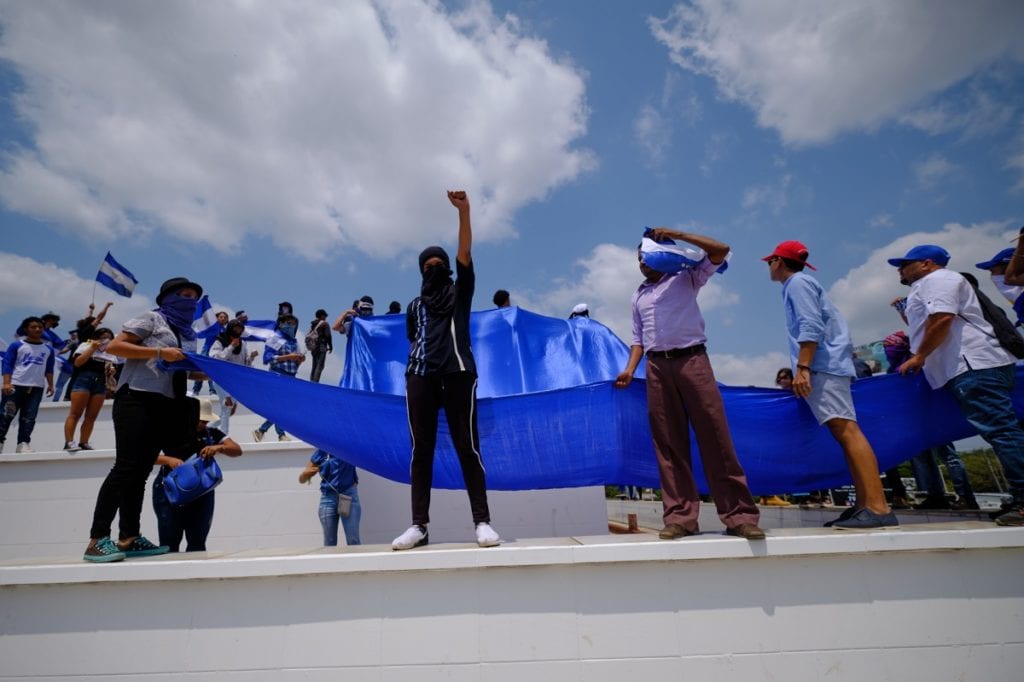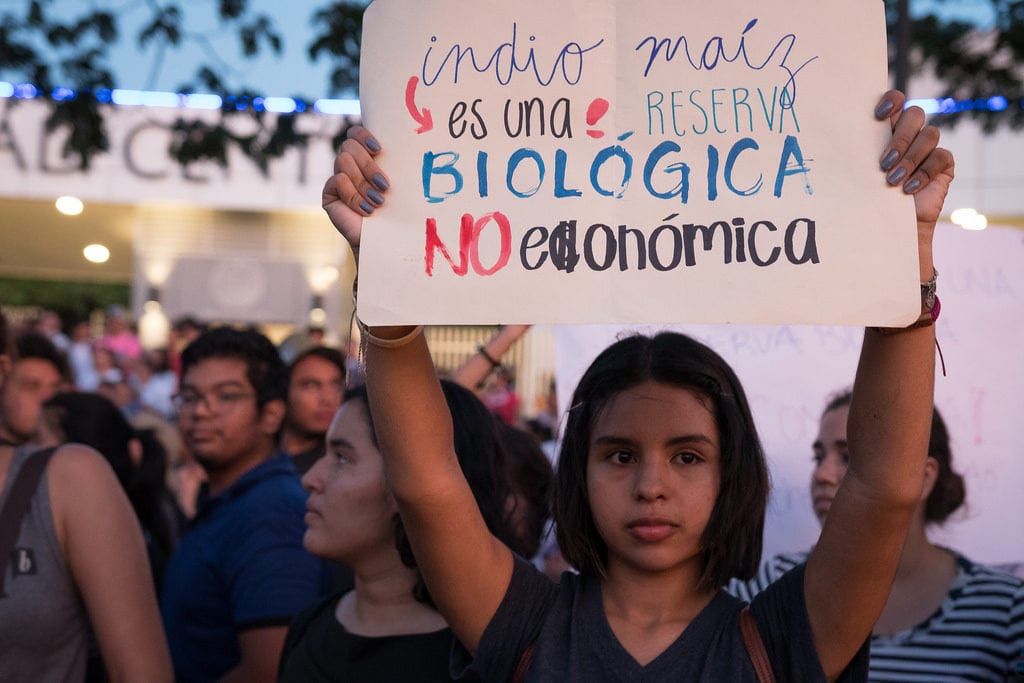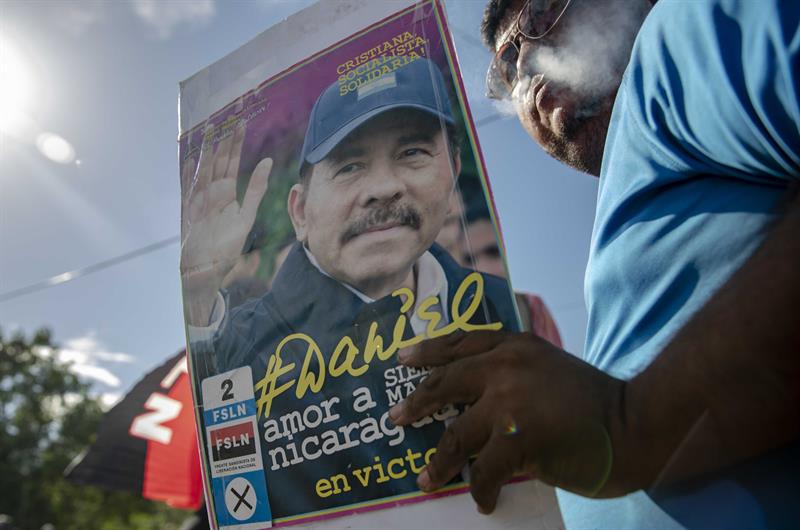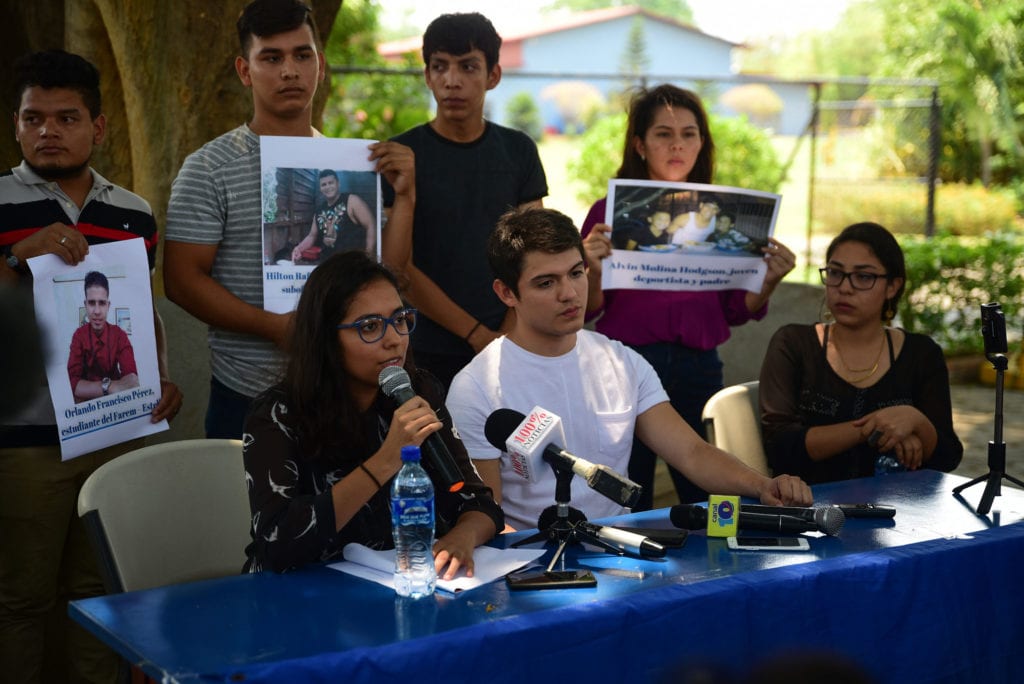We Are Not the Children of the Nicaraguan Revolution

We are the children of unhealed trauma. We want to lay the foundations to not live under a similar dictatorship in another 40 years
By Madelaine Caracas (Confidencial)
HAVANA TIMES –This is how April 2018 began: a fire, young people raising their voices and the repressive response of the Government to stop any demonstration that would alter its “normality.”
On April 10, a group of young people met to demand more action from the government to prevent the spread of a fire in a biological reserve. A day before, we hired Don Javier’s sound system for a thousand cordobas (about 30 dollars).
We had no idea if we were going to be able to collect the money that day, but to our surprise that night there were more than 300 young people singing “Nicaragua, Nicaraguita” at the entrance of the Central American University (UCA). On that day I knew that something was going to be different. That day the fire in the living forest of Indio Maiz lit up our bodies with a thirst of justice and changes that moved hundreds of students to the streets.
One year from that date I question why an environmental cause moved so many people from different sectors and ideologies. The signs were there: young people, nonconformity and repression.
In my case, it was not just the Government’s negligence—by not firefighting—and the lack of protection for indigenous communities. It was the weariness. The lack of participation of young people in the decision-making spaces and the distance of a leader who, as a tyrant, governs from above, without listening to the needs of a violated population.

However, the signs of weariness saw the light in the previous years with the protests of #OcupaInss, the Anti-Canel Rural Movement, groups of LGBTIQ, indigenous groups and diverse women’s movements that showed resistance to the human and constitutional abuses of Daniel Ortega’s misrule. None of these calls had the support for as much sectoral diversity as were #IndioMaiz and #OcupaINSS, which marked the difference for the civic insurrection that was coming just a week later.
The insurrection of April
I was nine years old when Ortega returned to power in 2007 and eighteen years when I was able to vote for the first time. I arrived at the booth determined to spoil the vote as a form of protest for fraudulent elections in which the FSLN was always favored.
They were the same as always, faces that while I was growing up, their names appeared in the headlines for corruption, money-laundering, theft and any other “crooked move” to keep filling their pockets and keeping their seats. At that moment I understood the words of my family when they told me that they are all the same and that is why they did not even “bother” to exercise the right to vote.
I am sure that my case is that of many young people of my generation, the so-called “dormant generation,” indifferent, computer activists. This generation was marked by so much more than that. We are not the children of the revolution; we are the children of the unhealed traumas. The memories inherited from our parents came mostly as short stories on a Sunday after mass, when we were still children. While for my brother, like many who were born in the eighties, they came in the form of traumas and uncured wounds.

While my brother remembered Daniel as one of the figures of the revolution, my memory was of a man thirsty for power who sexually abused his stepdaughter.
The political figures in the country have not changed much in 40 years. Young people never felt included in that political class, which did not listen to our demands and were marked by adultcentrism, where the idea prevails that young people “do not know what they’re talking about.”
In the country the government-businessmen’s duo ran the political future of Nicaragua. While the social movements worked for decades as a resistance to this discouraging panorama that had been forming. In that niche, some young people found a space for political participation.
It is no coincidence that April began with a protest for the burning of a forest and the reforms to social security. The elements that amplified these demands and the discontent of the population were the repressive and excessive actions of the National Police, which along with shock groups attacked the citizens. But the repression could not—and has not—silenced the voices of the thousands of Nicaraguans who remain in resistance.
After the outbreak
After this outbreak came an organizational process that took us by surprise. Young people began to organize ourselves in various movements in the face of a possible national dialogue, to take our demands and that nobody else would say them for us.

However, during these twelve months the correlation of forces in the decision-making spaces has changed. The students, peasants and other sectors have shown resistance to coexisting with the political force and with the greatest purchasing power of the country. After April the need for new faces and proposals is something that that the population didn’t take as a given and this new critical wave is the one that continues supervising from the streets and all spaces those who occupy a decision-making position.
As young people and as society we have many challenges. We must respond to the demands of justice and democracy with other sectors of society. How do we contribute to create a new political culture in the country? How do we break with top-down, classist and macho models to arrive at a model of inclusive, open citizen participation and where the spaces for dialogue are not only in times of crisis?
If we have learned something, it is that strength lies in unity and participation of society. The times of the “messiahs” that will resolve everything have to end, and now each one must be involved in some way to work for the construction of a State.

The processes of justice and transition will have to be part of the present and the future that we want. These years of conflict have left us with an increasingly polarized population, where the pains and traumas that the different generations carry will have to go through a reparation process.
This insurrection has brought very symbolic slogans as “Free Homeland, and Live,” “Let’s not act the same as them.” If we want a true transformation, we should make clear that we are facing a slow but effective process that can truly lay the foundations for not living in a similar dictatorship in another forty years.
The participation of women, peasant movements, indigenous communities, students and relatives of the victims will be decisive for the construction of a new political culture and social reparation.
*Member of the University Coordinator for Justice and Democracy and a human rights activist.






Ortega isnt that bad. You misunderstand him.
David mickle cantamar el yankee
The very title of the article demonstrates a deficiency of formal knowledge of the essence of human history as a social phenomenon. History is a succession of paradigms and nobody moderately informed can claim to be the product of a spontaneous generation detached from historical evolution. A serious problem facing the current Nicaraguan civic rebellion is that part of this youth that ardently rebels; with all the reason and justice of the world, against the tyranny Ortega Murillo, it suffers; due to the terrible quality of formal education in the country, of a general ignorance and of history, which deprives them of antibodies against the Yankee imperialism and against the representative democracy of the Fund. Then, their approaches to reality and their expectations are very simple and devoid of the complexity and strategies required to build an authentically democratic model, which is also “redemption of the oppressed” as dreamed by the General of Free Men Augusto Calderón Sandino. It should be noted that in the broad popular base that resolutely opposes tyranny, we have many children of the Sandinista Popular Revolution, as well as our children who learned to recognize the just causes and put them above their own security, with our example .
It’s time for a change, the new tyrant genocide is worse than Somoza, Daniel y Rosario Murillo, have more blood in there hands that all tyrants that have existed in our Latin America, and must face justice for all their crimes,the same goes for their maggots cold blooded criminals scumbags.
It was a very accurate and eloquent way to tell our current story! We’re still fighting for our Freedom and appreciate everyone speaking out for our cause!
Nicaragua people never don’t give up viva Nicaragua ?? libre de esa family criminal ??????????????